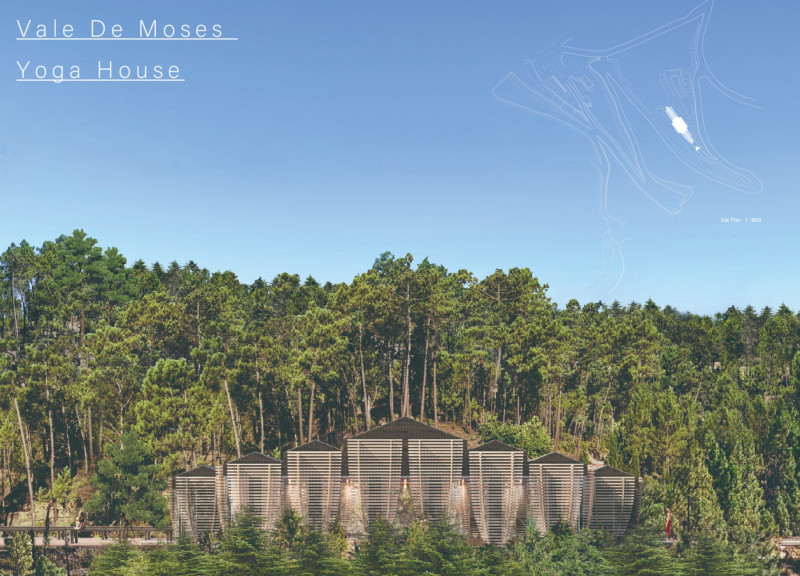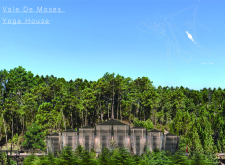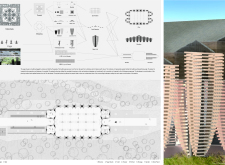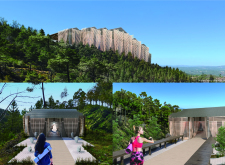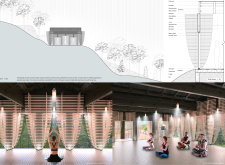5 key facts about this project
Functionally, the Yoga House serves as a dedicated space for individuals to engage in yoga practices and meditation workshops. Its design prioritizes creating a calming atmosphere that fosters mindfulness and community interaction. The layout is simple yet effective, emphasizing an open, flexible space that accommodates various forms of yoga practice. This flexibility extends to the rooms that accommodate amenities like showers and a kitchen, supporting the holistic experience of its users.
The architectural form of the Yoga House is composed of interconnected modules that mimic a sheltering tree canopy. This design approach not only takes advantage of the natural landscape but also promotes a sense of unity with nature. Each module features wooden facades with slatted construction that allows natural light to filter through while maintaining privacy. This intelligent design facilitates cross ventilation, ensuring that the internal spaces remain comfortable and inviting without heavy reliance on mechanical heating or cooling.
The materiality of the project plays a crucial role in establishing its connection with the environment. The predominant use of local wood throughout the structure creates a warm, organic feel, while also highlighting the craftsmanship of the region. The incorporation of reclaimed materials contributes to sustainability efforts, reducing waste and enhancing the overall character of the design. The thatched roof serves both aesthetic and functional purposes, providing insulation while paying homage to local architectural traditions. Additionally, large glass panels are strategically placed to create visual links between the interior and the expansive outdoor surroundings, enhancing the user experience.
An essential part of the project is the landscaped gardens surrounding the building. These outdoor spaces are designed to encourage interaction with nature, offering additional areas for yoga practice and reflection. The terraces act as extensions of the internal space, further solidifying the connection to the environment and providing opportunities for users to engage in their practices outdoors.
The unique design approaches evident in the Vale de Moses Yoga House underscore a commitment to sustainability and user experience. By utilizing passive solar strategies, the building optimally engages with the sun's path, enhancing energy efficiency without compromising aesthetics. The architectural details, such as the careful selection of materials and the dovetailing of functional spaces, reflect a conscientious effort to create a place that nurtures both the mind and body.
This architectural project serves as an inspiring example of how mindful design can successfully merge functionality, aesthetics, and sustainability in a way that fosters a deep connection with the natural world. For those interested in exploring the project further, detailed architectural plans, sections, and designs provide a comprehensive insight into the creative ideas that shaped the Vale de Moses Yoga House. Engaging with these elements will enhance your understanding of this thoughtful architectural endeavor.


